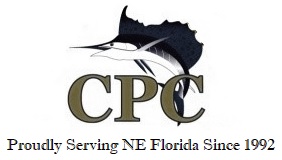july 2025
We will continue applying a combination of an insecticide and custom-formulated liquid nutritional spray to our properties this month. As usual, we will be checking your turf grass for issues and, if needed, treating them accordingly.
This is the time of year when many of us enjoy being outside. With the arrival of summer, pests such as ants, wasps, flies, and mosquitoes can become a nuisance, infiltrating our outdoor spaces and even making their way into our homes. Below are some effective tips for deterring and eradicating these unwanted visitors.
The two main times ants enter a home are when it is overly dry outdoors, they come inside seeking supplies, and when it rains and they are flooded out of their natural environment, they will come inside seeking dry ground.
There are several things you can do to help prevent them from coming into your home:
Ants enter your home through tiny gaps between the walls and utility lines, around your windows, and any other small holes or cracks; caulking around those areas will greatly aid in keeping them out.
Because ants can climb bushes and trees to enter your home, and mulch provides the perfect nesting for them, try to keep your outside plantings and mulch roughly 1' away from the base of your home.
The most important thing to ants is water, and they will gladly make their way into your home to get it! To successfully dissuade them, take into account the following tips:
Repair water leaks and insulate cold pipes and appliances to eliminate condensation.
Do not over-water your houseplants, and always empty any pot saucers that contain water.
Leave pet food out only at feeding time, and always store your pet’s food in airtight containers.
If you find yourself with ants in your home, sprays will only provide temporary relief. The only long-term solution is to place ant baits where you have seen the m. The bait attracts the worker ants, who will then carry it back to their nest to share with the colony, including larvae and the queen. It's important to continue replenishing the bait until you no longer see ants going to it, which ensures the colony has been eradicated.
Some other pests we receive calls about are wasps outside our clients' homes. The wasp has a sweet tooth, so a simple thing to remember is don’t feed them! To successfully discourage them, take into account these helpful suggestions:
Keep fruits covered at all times and serve juices only in pitchers with lids.
Always dispose of trash in receptacles with lids.
Remove scented candles from outside (not only can wasps mistake their scent for fruit or flowers, but flies and mosquitoes can as well).
Flies can be quite bothersome for various reasons, particularly due to their ability to transmit diseases. To effectively deter them, consider the following tips:
Use fans outside to create a breeze, which helps to keep them at bay.
Serve food in containers with removable lids.
Always dispose of trash in receptacles with lids and place the receptacles as far away from you as possible.
Remove scented candles from outside (not only can flies mistake their scent for fruit or flowers, but flies and mosquitoes can as well).
Mosquitoes are an issue for all Floridians. To avoid attracting them:
Eliminate any standing water outside your home.
Empty birdbaths and children’s pools at least once a week.
Remove scented candles from outside (not only can mosquitoes mistake their scent for fruit or flowers, but wasps and flies can as well).
Lastly, along with pests, heat, and buzzing insects, we need to be prepped for potential hurricanes. Summertime sure is busy, isn’t it?! This is the time to prune your trees of weak and dead limbs. Furthermore, take a careful look at the items in your yard to assess what you would need to relocate if a hurricane were approaching; it may be more practical to store certain items in your garage or alternative storage areas for the duration of the season. You should have your hurricane supplies on hand now. Don’t wait until the last moment, when supplies are often at a minimum and the crowds are immense. The “Florida Disaster” website @ https://floridadisaster.org/planprepare/hurricane-supply-checklist/ offers a thorough and printable checklist. Another helpful website is https://www.sjcfl.us/departments/emergency-mgmt/. Lastly, just as you need a plan for yourself and your loved ones, remember you need a plan in place for your pets too! While we all hope we won’t have to deal with any hurricanes in our area this year, it’s always better to be ready now than unprepared later.

